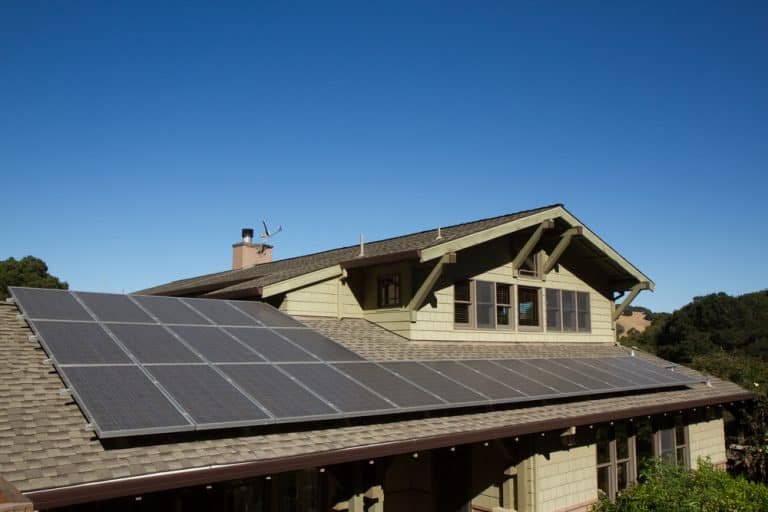What an Inverter Does for Solar

Solar panels get a lot of attention, but they aren’t the only aspect of a solar array. There are several off-the-panel factors that go into solar.
One of these is the inverter. A solar inverter is key because it allows the solar power to reach the home.
What is a Solar Inverter?
A solar inverter is a piece of equipment that changes direct current (DC) to an alternating current (AC). Changing this current is necessary because solar panels produce DC and homes use AC.
Although DC is often needed to run appliances, AC runs through the power outlets. Charging and power cords have rectifiers in them that change AC to DC.
The current provided to power outlets is different because AC is easier to manipulate. It can be amplified or reduced by a transformer, making utility-scale power easy to transport. Without an inverter, solar produced electricity can’t power homes.
Basic Theory of Solar Inverter
The basic theory behind a solar inverter is it converts the DC produced by the solar panels to AC. This process allows solar produced power to mix with the AC from the power lines.
Deep Dive Into Solar Inverters: What Converts DC to AC
DC is a straight line of current while AC is a wave, hence the names direct and alternating. To change from DC to AC the current needs to switch back and forth between two contact points at a high speed.
The switching current creates a choppy wave known as a Square wave. A transformer then amplifies or reduces this current as needed.
Inductors, resist change in the current flow, and capacitors, store electrical energy, make the transition in the wave smooth. Making the AC sent to the home a sine-wave which is the same wave of AC that comes from the electric grid.
How Inverters are Strung
Inverters, in addition to changing the current type, also maximize the power output of the solar array. This value manipulation is possible by adjusting the current and voltage of the array. Multiplying these two values together equals the wattage the array will produce.
Solar panels are often either wired in parallel strings or a continuous series. The wiring method used will do different things for the system.
Each solar panel in a series adds to the voltage of an array, but not the current. If a solar panel in this wiring type has shade it will impact the current of the entire system.
Each solar panel on parallel strings increases the current but not the voltage. This decreases the impact shaded solar panels have on the rest of the system. The best stringing method is dependent on the max wattage each configuration can achieve.
What Size Inverter do I Need for Solar?
Not all inverters are the same. Each has a different wattage rating.
Determining the wattage needed for an inverter is dependent on a couple of factors. These include the size of the solar array, the amount of sun the area gets and the multifaceted factors that determine the efficiency of the array.
These elements determine the end wattage of a solar array. This wattage is then matched to the wattage of the inverter.
Over and undersized inverters will not convert all of the available electricity. It is best if the inverter has as close to a 1 to 1 ratio to the solar array as possible. This ratio is found within the inverter’s maximum power point range.
Types of Solar Inverters
The type of solar inverter used can have a drastic impact on the efficiency of the entire system. This is why it is important to know the available inverter types and the situations each is best for.
Although there are many inverter brands and types, they all fit into two groups. These groups include string inverters and micro inverters.
Everyone has different priorities when they purchase solar. These priorities play well into the differences between these inverter types.
String Inverter vs Central Inverter
String inverters are often installed near the meter or inside the home. These systems require large amounts of unshaded space to work at full capacity.
Central inverters, like the Hi-Q inverter, are a larger version of the string inverter. This inverter type is often used for utility and commercial solar projects.
Micro Inverters
Micro inverters are compact inverters scaled to meets the needs of one solar panel. One micro inverter goes on the back of each solar panel in an array. These inverters increase the performance of a partially shaded array and design flexibility of the system.
Power Optimizers and Sting Inverters
DC power optimizers are a string inverter enhancer. Like the micro inverter, this device solves string inverter shading problems.
Power optimizers increase the DC of the solar panel before converting it into AC at the inverter. It monitors each solar panel and maximizes the sunlight the solar panels have to work with.
Go Solar Group currently uses the SolarEdge optimized string inverter. To learn more about what a solar system with this inverter can save you request a solar quote for your home.



Send a Message
Oops! We could not locate your form.